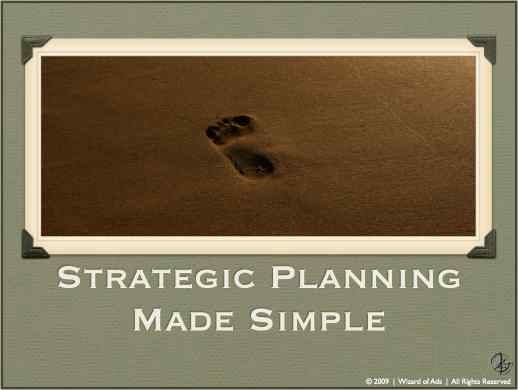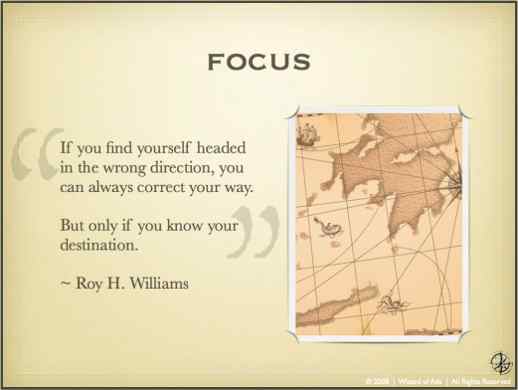
What do you want to improve in 2010? How are you going to do it? Do you have a plan?
For several years, I’ve traveled across the US and Canada to speak to small businesses about how to make their messages more persuasively powerful than their competitors. I would talk about the principles of a powerful message, and I’d always have three or four owners come up to me afterward and ask – conspiratorily – what the secrets were …
No secrets. Just principles wrapped around values specific to your business.
But … but …
It occurred to me, we had to back up and first speak of strategy.
The foundation of my talk and tools for strategic planning comes from a Monday Morning Memo that Roy Williams wrote in September of 2007 where he was laying out the process through which he and his associates evaluate how best to help a small business. I said to him, “dude this is really powerful. Do you mind if I take this, elaborate on it, and make a keynote presentation from it?” He said, “please, with my blessing.”
A number of small businesses are positioning themselves to overtake their much larger competitors. For all intents and purposes, here is how they are doing it. They are doing it in five steps.
The first of the five steps? Focus.
What – specifically – are you trying to make happen?
It’s the very first thing I need to know when I start working with a small business, and I don’t care whether you are a graphic design firm or a physical therapist or a criminal defense attorney.
I just spoke for an hour and a half yesterday with someone interested in hiring me, sort of a had a first date with him, and, before we could make any sort of method, much less a strategy, I needed to know what it was he’s trying to do.
 Imagine a treasure map with two X’s on it. One is where you are today and one is where you want to go.
Imagine a treasure map with two X’s on it. One is where you are today and one is where you want to go.
Are you trying to take your company from point five to one million in eighteen months? Okay, great. I just need to know:
- that you know what it is and that you can communicate it to me in a simple sentence or two very clearly and plainly, and
- that it’s realistic so that I can help you get there.
Another way to think of this: you’re sitting with your feet up on your desk, and you are popping a bottle of champagne and you are celebrating. What is it you are celebrating? What triggered the party? What just happened? Tell me simply and plainly. Because that’s how we’ll be measuring the power of our relationship together.
Before you can do anything you have to know what it is you are trying to do. You have to be able to communicate clearly and say it plainly. If you ask someone what is it she is trying to make happen, and you start to hear a lot of marketing speak and clichés and jargon, it’s a red flag that she doesn’t really have an idea of what it is she is trying to do. Maybe they have a very broad stroke idea of what they hope can happen.
Give me the person who can tell me, in twelve words or less, what it is they are trying to make happen and I can help that person achieve that goal provided it’s realistic and not unlawful.


Leave a Reply